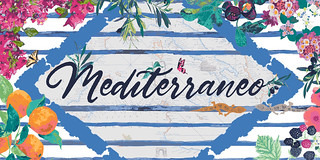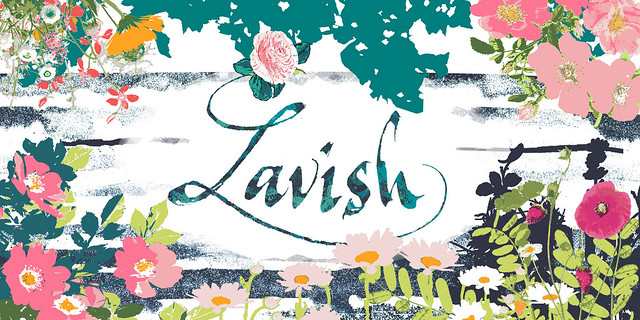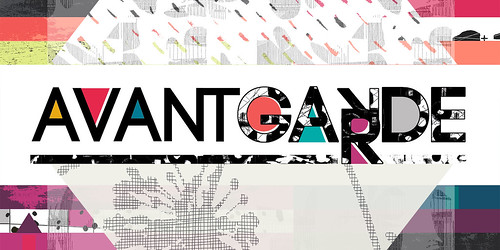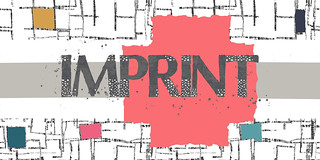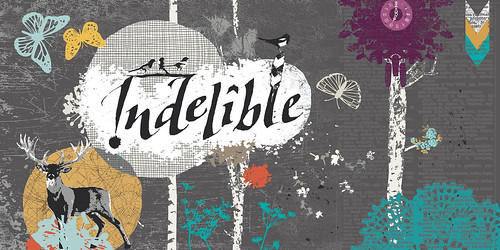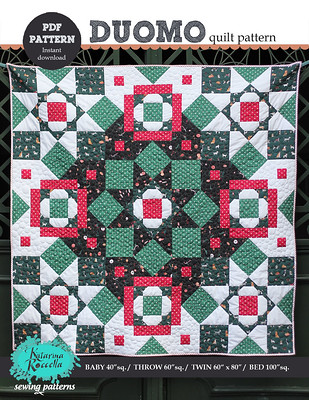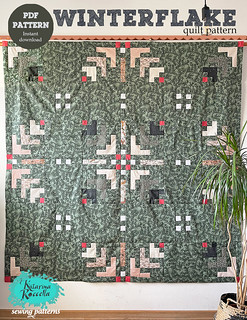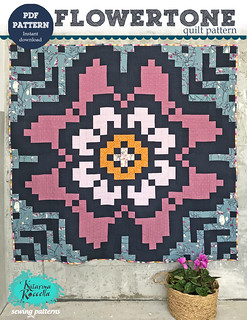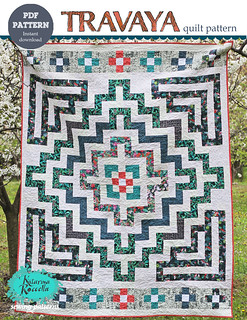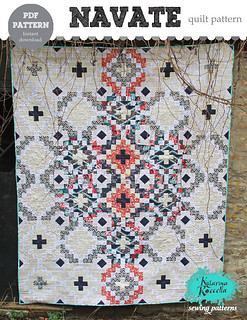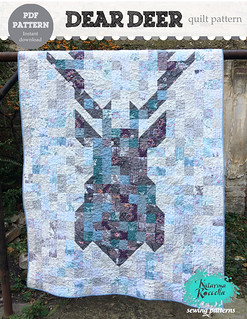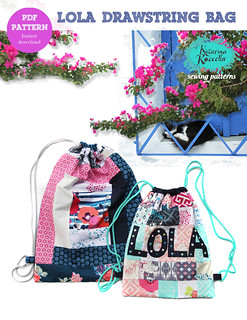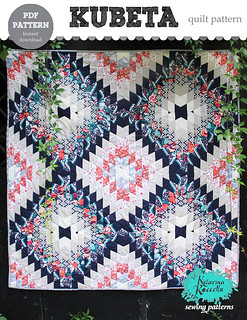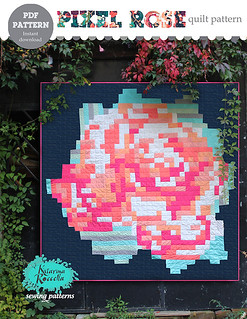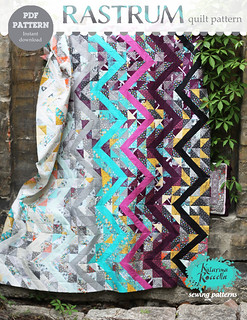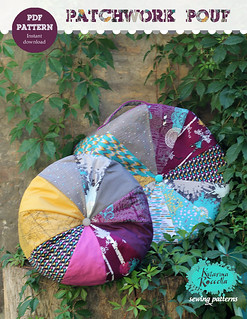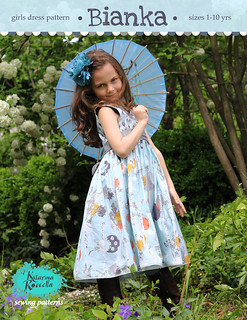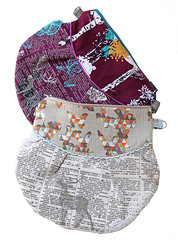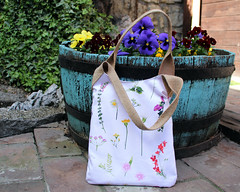As you could see from my
previous post, I created the Peacock Garden table runner with my newest
Decadence fabric collection.
The center of the table runner features the hand applique peacocks with a stylized plant pot in the middle.
This motif comes from my
Regal Impressions chinoise print, that comes in quilting cotton-poplin (with metallic accents), as well as in knit.
The inspiration for the print comes from the vintage Yugoslavian laces, that is always a great source of inspiration.
The dimensions of the table runner are: 49" (125 cm) x 35" (89 cm).
Sew allowance is 1/4".
To create it yourself, here's what you'll need:
1.
main fabric: 1 yard of the 44/45" wide fabric ( I used PE 413 Caviar )
2.
frame squares - 78 (seventy eight) of various prints of quilting cotton cut in 2.5" squares (I have cut 4 pieces of each of the 20 prints from the Decadence collection)
3.
yarn for the central peacock applique (I used COSMO Sparkle Metallic Embroidery Floss for hand embroidery in Champagne)
4.
binding trim or fabric strips: 5 yds of 2 ¼ " binding trim ( I used 4 strips of 2 ¼ " x WOF of the Striped Fleur Paradis Fabric from Decadence collection)
5.
peacock tails applique pieces: fat quarter of the Plumage Mirrors Noir print - cut 28 feathers
6.
backing fabric: 1 1/2 yards
7.
batting: approx. 40 x 55" piece
8.
sewing machine, thread, scissors, pins, iron

Use the entire width of the fabric (44/45") and cut approx. 33" for vertical sides (I suggest cutting like this, so that you can cut it more precisely once the frame squares will be pieced and ready to add to the main fabric piece.
The precise dimension of the main fabric piece is : 44.5" x 30.5"
For the central embroidery, download the free template
HERE.
As the peacock image is the mirror image, you will need to trace the same drawing for both sides, using the vertical grey line as the central point.


It was a bit tricky to find the best way to trace the image on the dark fabric, but
HERE's how to do it.
For the hand stitching, I used the chain stitch and the running stitch.
Once the embroidery is finished, start pinning all the feathers for the tails. My plan was to do the needle turn applique for them and that's why I left approx. 1/4 seam allowance around the feather shapes, but due to the time limit I had, I did the free motion quilting but only after I finished the quilt (table runner) top and made a quilt sandwich.
Sew the square frame.
There are 22 squares forming the horizontal row and 17 squares in the vertical row. Make two vertical and two horizontal rows to form the entire square frame. Press them.
Use the obtained dimension of vertical rows (it will depend on your piecing precision) to precisely cut the main fabric.
Sew the horizontal rows first to the main fabric and after that, join the vertical rows to complete the frame.
To make the quilt sandwich:
Place backing fabric on a large surface-wrong side up and stretch it with masking tape against that surface. Place batting on top of the backing fabric. Place quilt top on top of the batting with right side facing up. Smooth away wrinkles with your hands. Pin all layers together and baste with basting thread, using long stitches. You can also use safety pins to join the layers. Machine or hand quilt starting at the center and working towards the corners. After you finish, trim excess of any fabric or batting, squaring the quilt to proceed binding it.
I suggest doing the
Double Fold Binding, which has double thickness.
If making your own trim from fabric-cut four (4) 2 ¼ " wide strips by the width (WOF) from the fabric
to make a final strip 176" long.
Fold and press the long strip in half lengthwise (on the shorter side), wrong sides together.
Cut the beginning of the binding strip at a 45° angle. Start sewing the binding strip in the middle of one of the sides of the quilt, leaving approximately 5" long tail loose. Sew with ¼" seam allowance (using straight stitch), aligning the strip’s raw edge with the quilt top’s raw edge. Pin in place if needed.
When your needle is 1/4˝ from the corner, turn the quilt and stitch off at a 45° angle and stitch reaching the end of that corner.
Turn the quilt and fold the strip in a motion of 45° and upward, pressing with your fingers, using the angled stitch as your guide. Hold this fold with your finger, bring the strip down in line with the next edge, making a horizontal fold that aligns with the top edge of the quilt. Start sewing at ¼" of the border, stitching all the layers. Do the same in the four corners of the quilt.
When approaching the starting point, stop stitching at least 10˝ from where you started, leaving another tail, at least 6” long. There will be a gap between the stitched bindings. Unfold the ending binding and align it nicely with the quilt edge. Open the ending strip toward the quilt, right sides together and place the beginning of the binding strip that is cut at 45° inside the open part of the ending binding strip. Using a pencil or a pin, mark the line on the ending binding strip where the begging piece lays. Mark another parallel line to the first one, precisely ½ “ distant, so that it can be lined and sewn perfectly with the other end, using 1/4 seam allowance. Pin and sew the ends, right sides together. Press the seam open and finish sewing that remaining binding piece onto the quilt edge.
Turn binding to the back of the quilt, far enough to cover the trimmed edges and stitch by hand using blind stitch.
Happy sewing!!
Katarina
xx

















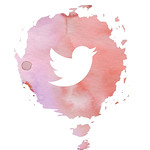


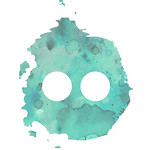





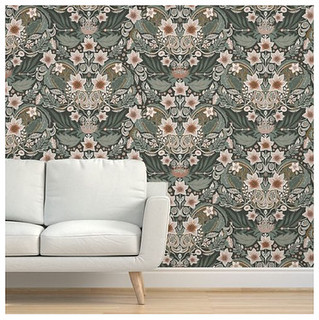

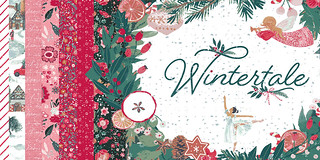



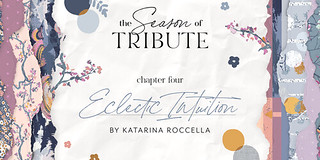
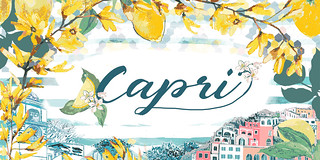
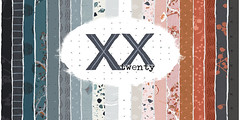


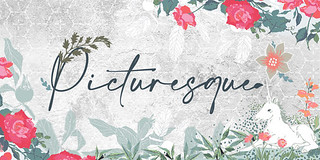


 GRID
GRID
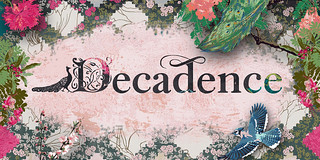 DECADENCE
DECADENCE
